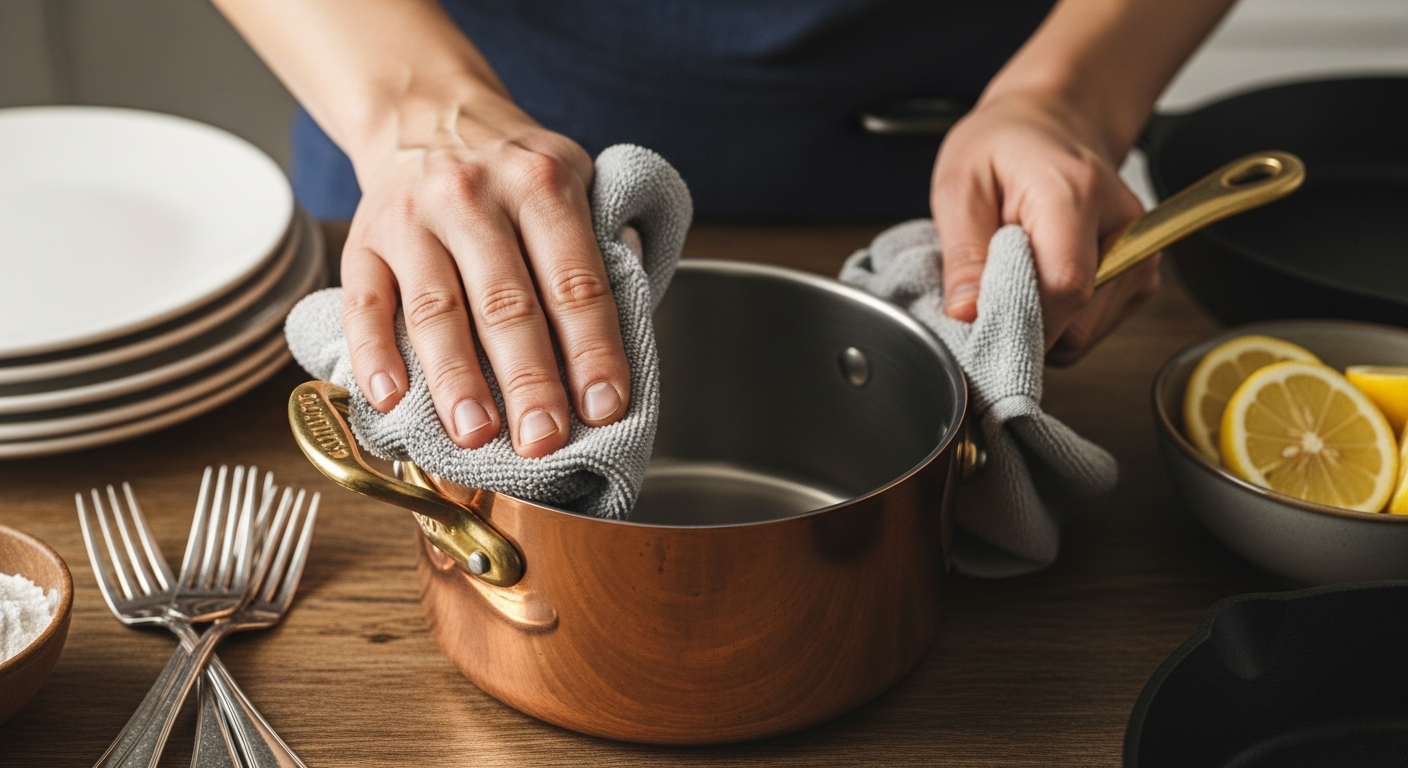Step-by-Step Care for Cookware and Tableware to Preserve Finish
Maintaining the finish on cookware and tableware extends their usefulness and keeps your kitchen looking tidy. Practical care routines—cleaning, storing, and mindful use—reduce wear, prevent staining, and support hygiene. This article outlines step-by-step methods that fit into meal prep, hosting, and everyday kitchen flow while considering sustainability and ergonomics.

First paragraph: Proper care for cookware and tableware begins with consistent, simple steps you can adopt during meal planning and prep. A routine that includes correct washing techniques, careful drying, and thoughtful storage protects surfaces and finishes while supporting hygiene. Attention to ergonomics and appliance use reduces accidental damage; sustainable choices in cleaning and maintenance lower environmental impact. The guidance below focuses on preserving finish without recommending specific brands.
How should cookware be cleaned and stored?
Start by addressing cookware while it’s still warm but not hot: let it cool slightly before soaking. Use non-abrasive sponges and detergents suited to the material—mild soap for stainless steel, gentle cleansers for nonstick, and specialized care for cast iron and copper. Avoid harsh scouring pads that dull surfaces. For storage, stack with protective layers (cloth or silicone liners) or hang pans by handles to prevent scratches. Keep lids organized to avoid pressure on rims, and ensure items are completely dry before storing to prevent corrosion.
What are tableware cleaning and hygiene steps?
Rinse tableware soon after use to minimize staining and food buildup. For everyday ceramic, glass, and porcelain, warm water and a soft sponge remove most residues; for persistent marks, a paste of baking soda and water can be effective without scratching. Maintain hygiene by replacing sponges frequently and using dish racks that permit air-drying. For items used in serving food, inspect for hairline cracks where bacteria can hide; replace compromised pieces. Avoid thermal shocks—don’t move tableware rapidly between extreme temperatures as glazes can crack and finishes become vulnerable.
How to organize utensils and kitchen layout for access?
Design an organization system that keeps frequently used utensils within reach of prep areas and appliances—this reduces handling and accidental dropping. Use drawer dividers or vertical utensil holders to separate metal from wooden tools, preventing abrasion. Store sharp knives in a block or magnetic strip to protect blades and surrounding surfaces. Plan layout so heavier items sit lower; lighter, delicate pieces should be higher or in enclosed cabinets. Clear labeling and a consistent layout reduce the need to shuffle items, preserving finishes over time.
How to protect appliances, surfaces, and finishes?
Appliance surfaces and countertops take a lot of wear; protect them with trivets, cutting boards, and pads under small appliances to prevent scuffs and heat damage. Clean stainless-steel appliances with soft cloths and cleaners designed for that finish to avoid streaks and scratches. For stone or laminate counters, use mild cleaners and avoid acidic or abrasive products that dull sealants. Pay attention to ergonomics when lifting heavy pots—use both hands and proper posture to prevent dropping and denting finishes on both cookware and surfaces.
What maintenance prevents scratches and wear?
Regular maintenance includes periodic deep cleans and gentle refurbishment: remove mineral buildup with vinegar for compatible surfaces, re-season cast-iron pans to maintain their protective layer, and polish copper with designated cleaners if a bright finish is desired. Check handles and fastenings and tighten screws on pot lids or utensils to avoid wobble-related damage. Replace worn silicone or rubber components that can trap moisture against metal. These steps combine preventive care with small repairs that extend the life of finishes and improve safety.
How to align care with meal prep, hosting, and sustainability?
Integrate care into mealplanning by assigning washing and drying tasks during prep lulls to avoid long delays before cleaning. For hosting, stage durable serving pieces to reduce frequent handling of fragile items. Choose eco-friendlier cleaners and limit hot-water use where possible to conserve energy; use full dishwasher loads when appropriate but follow manufacturer guidelines to avoid harming delicate finishes. Consider second-life uses for chipped or mismatched pieces to reduce waste—repurpose as herb planters or storage containers to support sustainability.
Conclusion: A step-by-step approach—cooling cookware properly, using gentle cleaners, organizing utensils thoughtfully, protecting surfaces and appliances, and performing routine maintenance—preserves finishes and supports hygiene. By embedding these practices into meal prep and hosting routines, you minimize wear and extend the practical and aesthetic life of kitchen items while keeping sustainability and ergonomics in mind.





